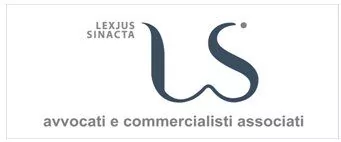In November 2014, a "Study on Third-Party Liability and Insurance Requirements of Remotely Piloted Aircraft Systems (RPAS)" prepared by Steer Davies Gleave for the European Commission was published. The main points of this exhaustive report can be summarized as follows.
1. Purpose
RPAS (also known as UAS, Unmanned Aerial Systems) need to become as safe as traditional aviation in order to allow the development of civilian operations. Since accidents may happen, adequate compensation for victims needs to be provided. For these reasons, the report analyses the existing liability regimes and the legal conditions of third-party liability insurance in the European Union, as well as the current industry practices and the insurance market. Additionally, recommendations are made with the aim to protecting third parties, while supporting the development of the European RPAS industry.
2. Liability
The Study concluded that no harmonized regime for liability for damages to third parties caused by RPAS (or even manned aviation) exists either at EU level or internationally. Therefore, the issue is regulated by national rules, which vary from State to State.
In addition to that, the Study found that the majority of EU Member States provide for strict liability on UAS, i.e. the defined party is automatically liable for damages, regardless of attribution of fault. In the case of RPAS, identifying the liable party may be more complex than in manned aviation.
According to the Study, the liable party is generally considered to be the operator, who is required to have insurance for third-party liability pursuant to EU Regulation 785/2004. As a result, without identification of the UAS operator there is no possibility for third parties to obtain compensation. Since in some scenarios the operator could hardly be identified (owing to the complete destruction or loss of control of the aircraft, intentionally concealing one's identity, etc.), it is important to ensure that operators can be identified based on physical information of the unmanned aircraft.
In any case, nothing prevents either victims or the operator from making claims against other parties, such as the manufacturer of the RPAS. The European Product Liability Directive 1999/34/EC, which establishes the principle of liability without fault, applies to manufacturers and importers also in this sector.
The process of obtaining compensation for victims tends to be lengthy and complex, sometimes involving judicial proceedings. In a recent case in the United States, the National Transportation Safety Board (NTSB) ruled in favour of the Federal Aviation Administration (FAA), after the latter sought to assess a civil penalty for the operation of UAS in a reckless and careless manner. On 18 November 2014, after a series of appeals, the NTSB concluded that: (1) RPAS are "aircraft" within the Federal Aviation Administration's statutory and regulatory definitions; and (2) prohibited RPAS operation in a careless and reckless manner under FAA regulations. The decision represents a significant victory for the FAA in its attempts to prohibit unlawful UAS operations. Ultimately, the ruling highlights to both private and commercial operators that RPAS are clearly under the FAA's jurisdiction. 1
3. Insurance
Thanks to the above-mentioned Regulation 785/2004, there is a well-established and functioning framework defining third-party liability insurance requirements for RPAS in the EU, based on the mass of the aircraft. Other factors that may influence the importance of damages caused by an accident are not taken into account.
However, the scope of the Regulation raises some issues. In fact, it does not apply to model aircraft under 20 kg. In some cases, there may be no difference between a model aircraft and a light RPAS, so the latter would not be covered.
Given the lack of data on damage caused by RPAS accidents, it is not possible to reach definitive conclusions as to whether the current minimum requirements for third-party liability insurance for RPAS are sufficient. However, some indicators show that they are relatively low. While affordable insurance is available in most Member States, the small number of providers entails limited price competition.
4. Risks for lack of insurance
The Study also took into account the possibility that illegal, uninsured operations could take place. It found that the risk of illegal operations is greater in the UAS sector compared to manned aviation. Although it is not possible to estimate the current proportion of illegal RPAS operations, tackling this issue would allow damaged parties to obtain compensation. Moreover, if the UAS sector grows as is projected, there will probably be a need for increased enforcement action by national authorities concerning insurance and other regulatory requirements in the future.
Given the present lack of information on the proportion of uninsured operators, it is impossible to determine at this stage whether a compensation scheme would be feasible and how it could work.
5. Recommendations
The Study found no evidence that the above-mentioned variation in third-party liability regimes across Europe hindered the development of the RPAS market or created significant problems in granting victims adequate compensation. As a result, it recommends that no attempts to harmonize third-party liability regimes across the EU are made.
Moreover, the report recommends that criteria for minimum insurance requirements remain unchanged, for there is neither sufficient data on the actual damage caused by RPAS in incidents nor clear reasons for treating RPAS differently from manned aircraft. However, it is recommended that minimum insurance requirements be reconsidered in light of data that will be collected in the future.
In other words, the Study recommends what has been put forward in other contexts, i.e. that the existing legal framework on manned aviation is also applied to unmanned operations, making the specific adjustments to adapt the legislation as they become necessary.
Footnote
1 NTSB Order No. EA-5730, November 18, 2014, Michael P. Huerta, Administrator, Federal Aviation Administration v. Raphael Pirker, accessible at: http://www.ntsb.gov/legal/pirker/5730.pdf
The content of this article is intended to provide a general guide to the subject matter. Specialist advice should be sought about your specific circumstances.


